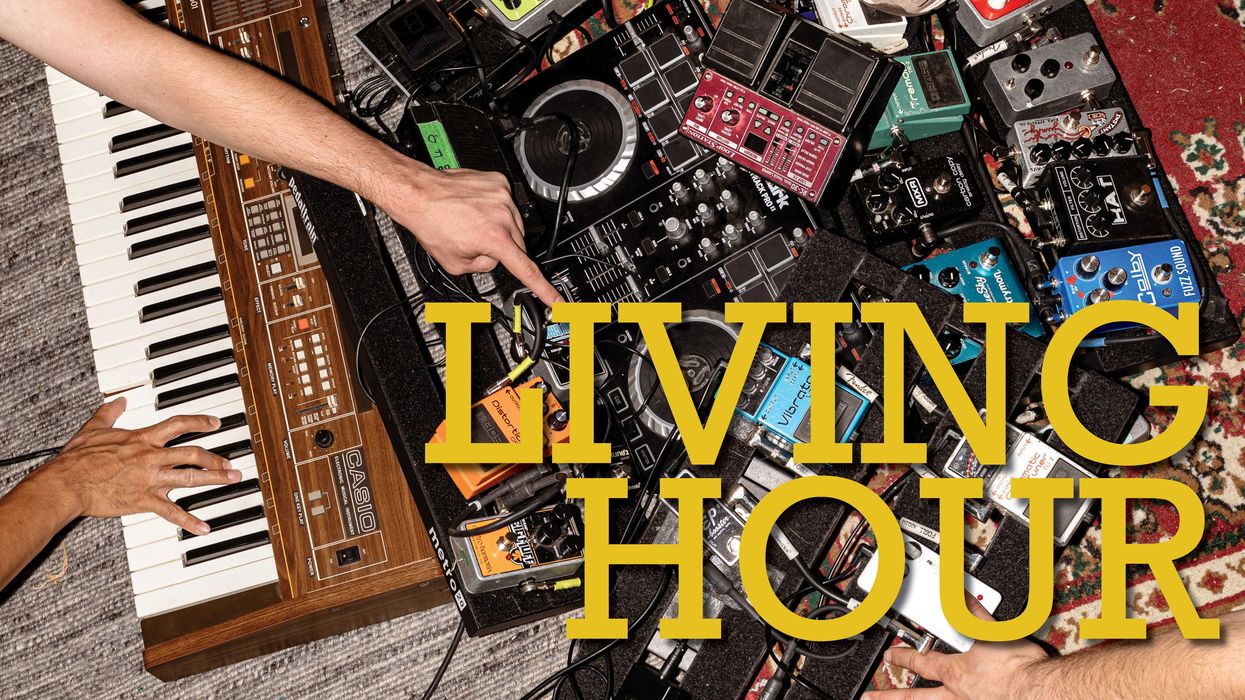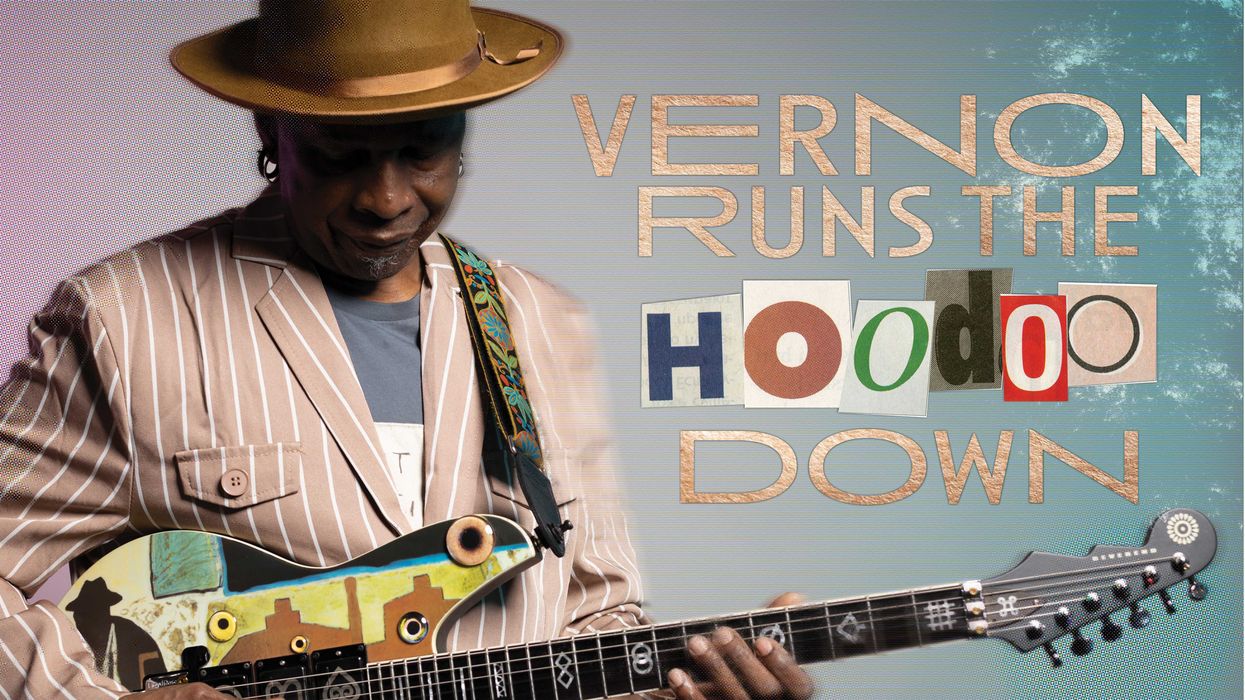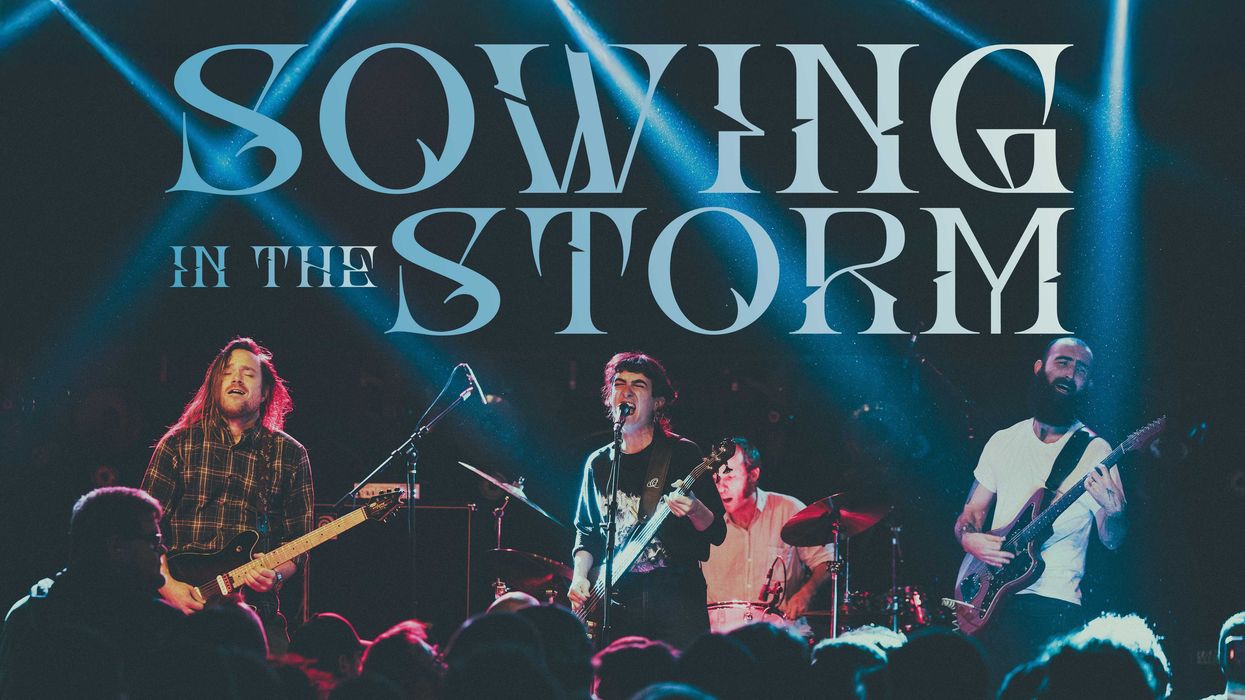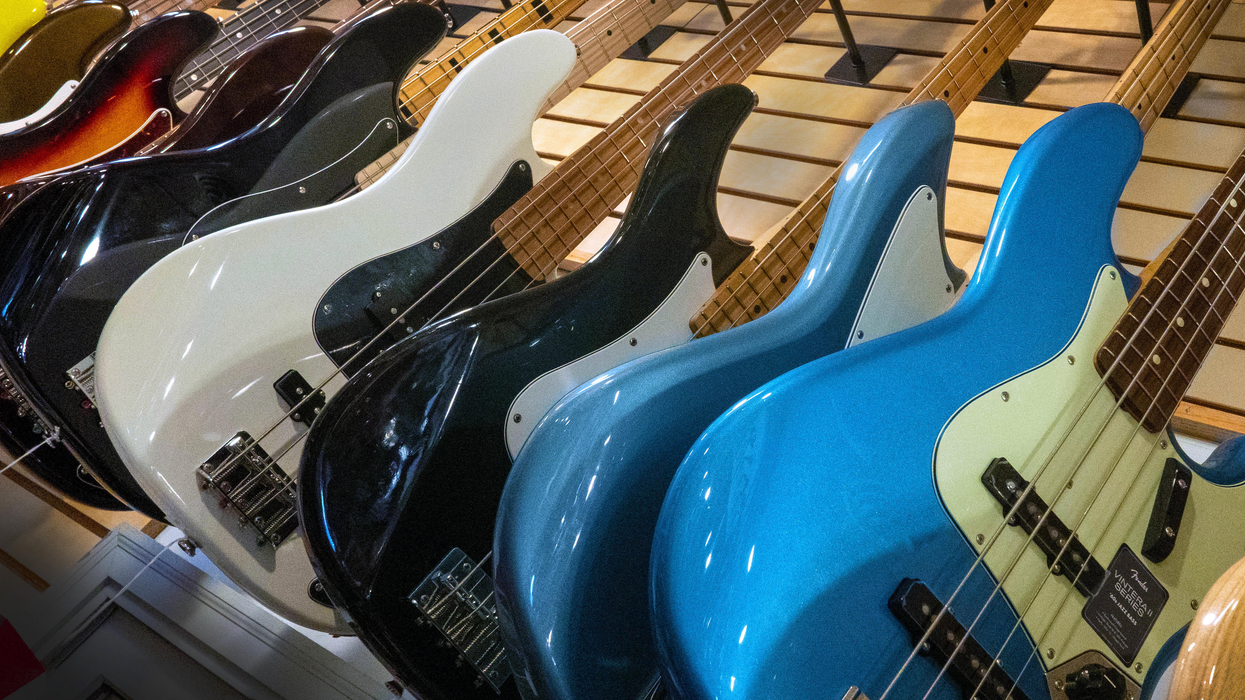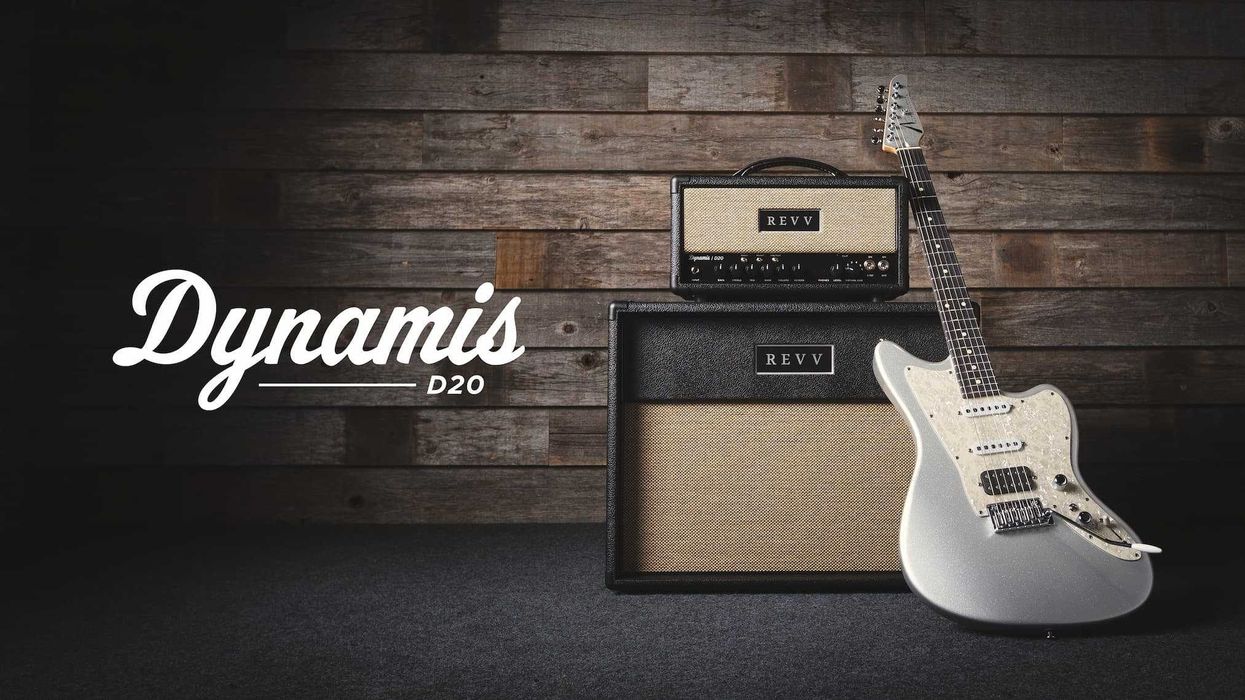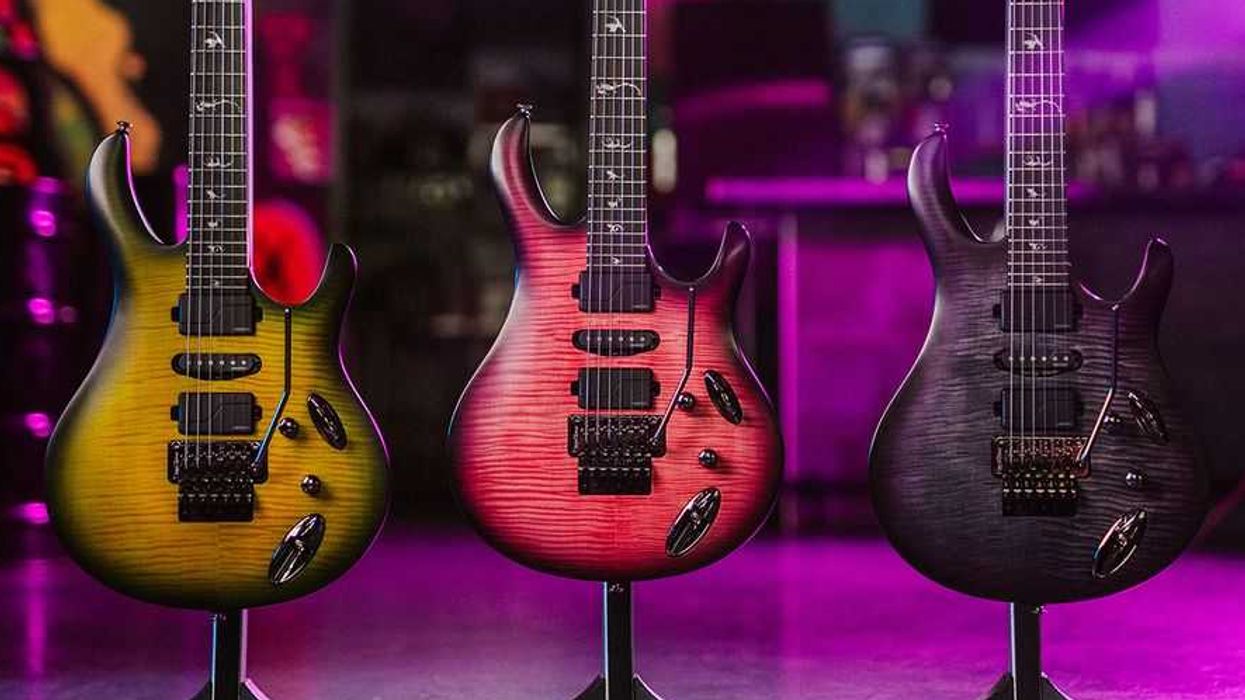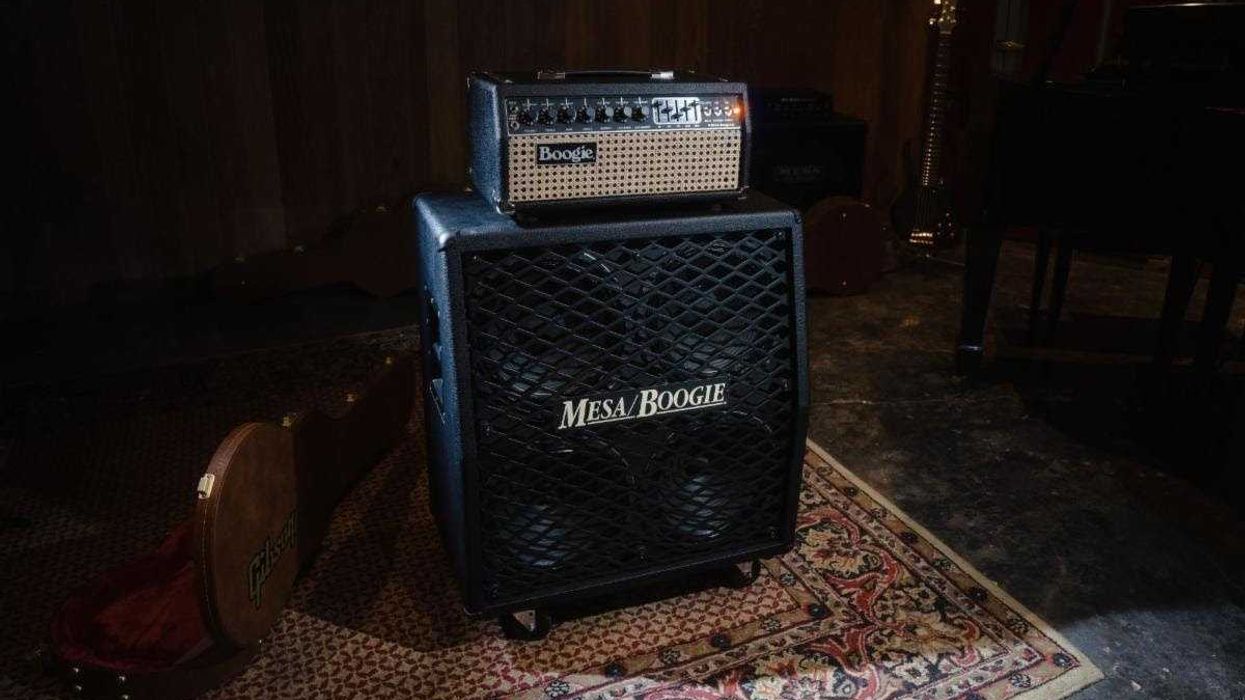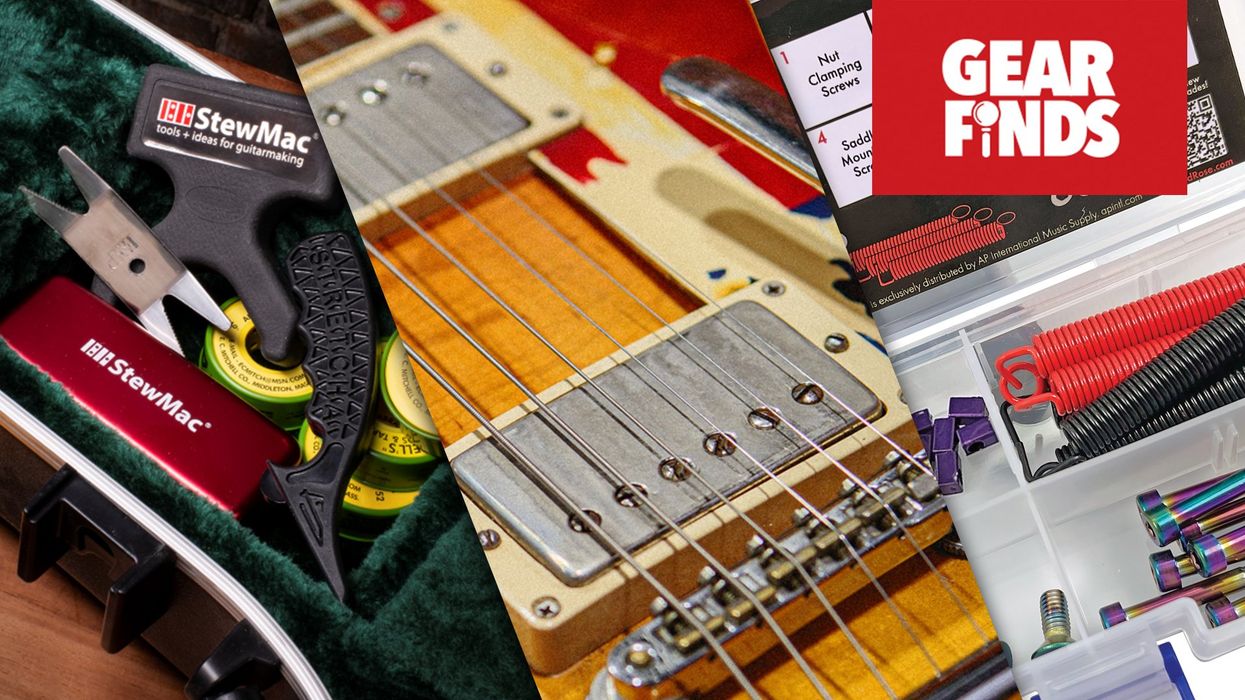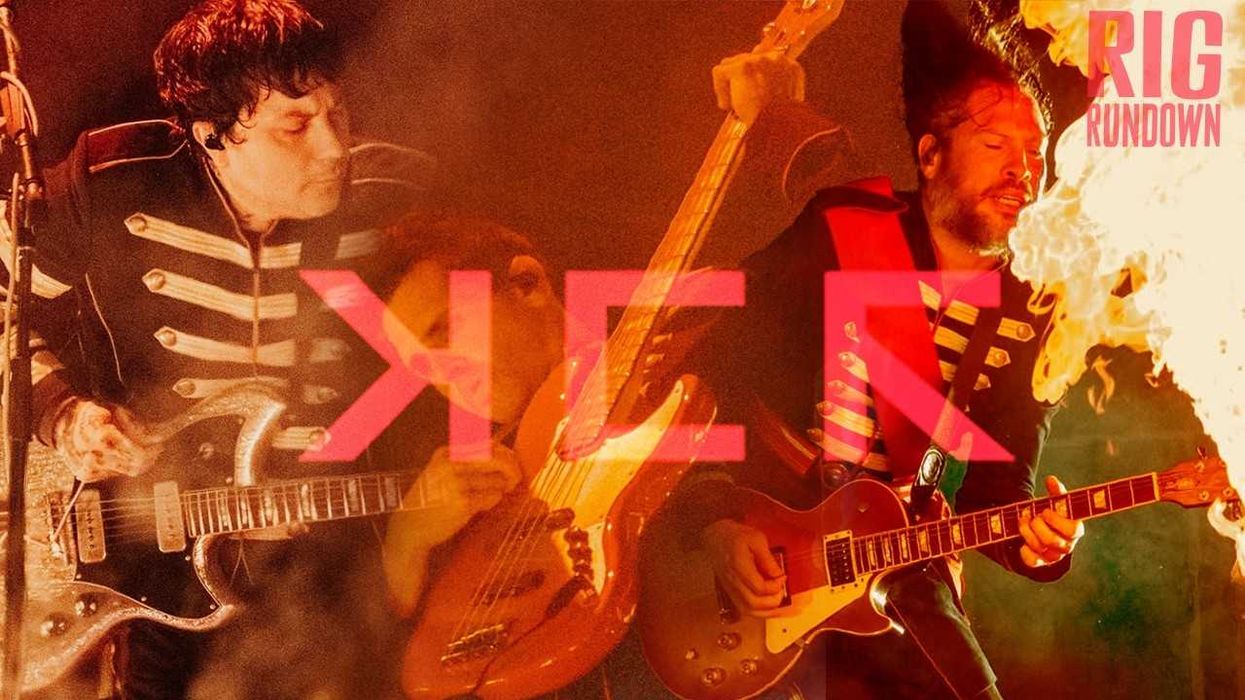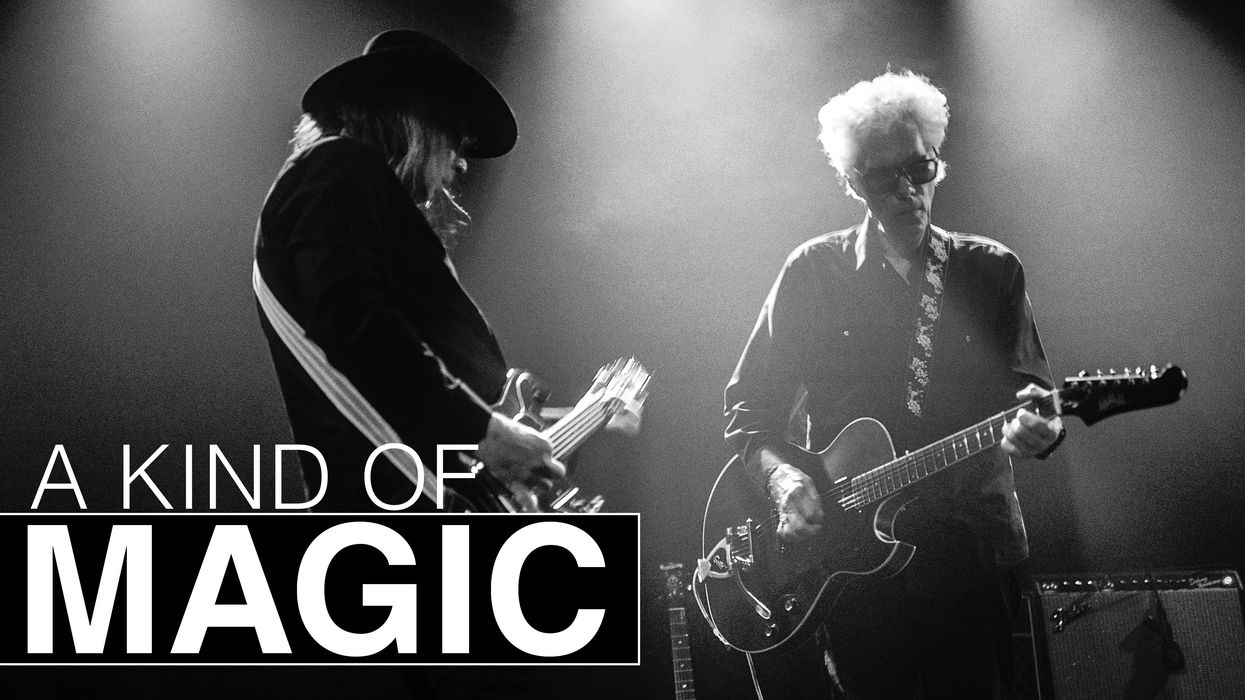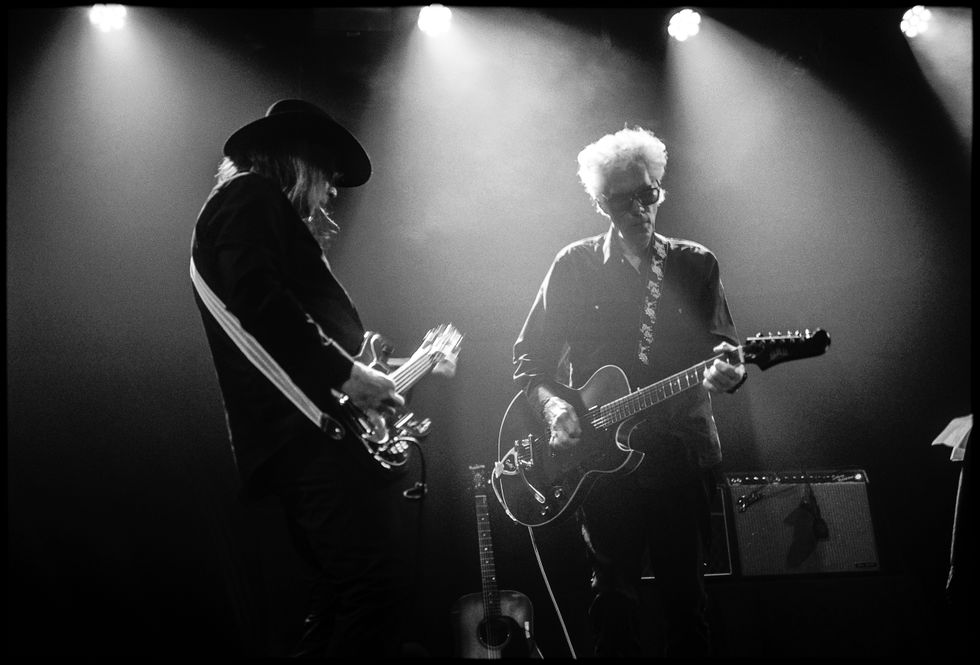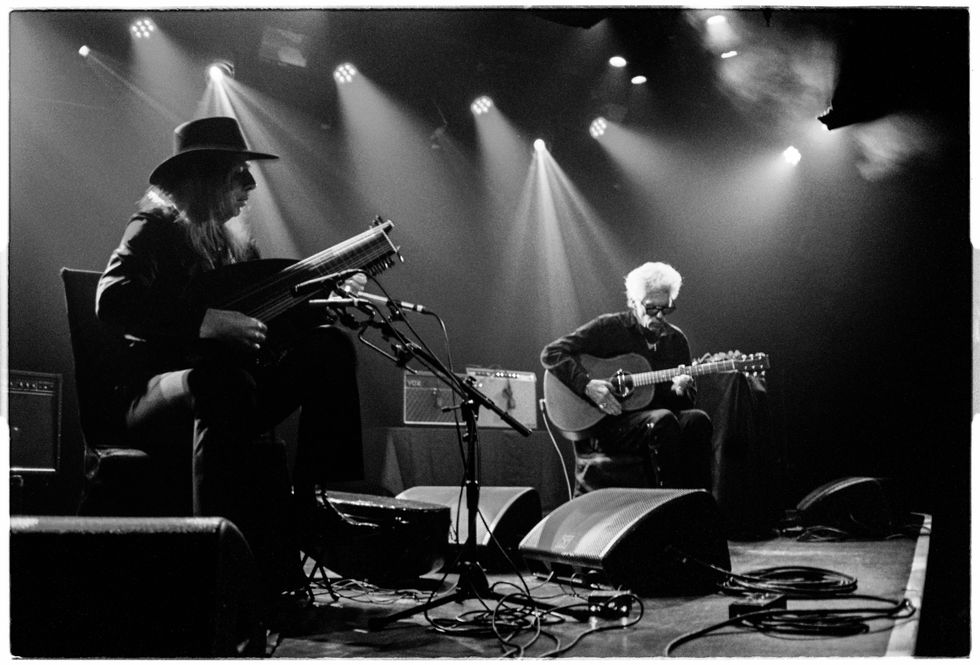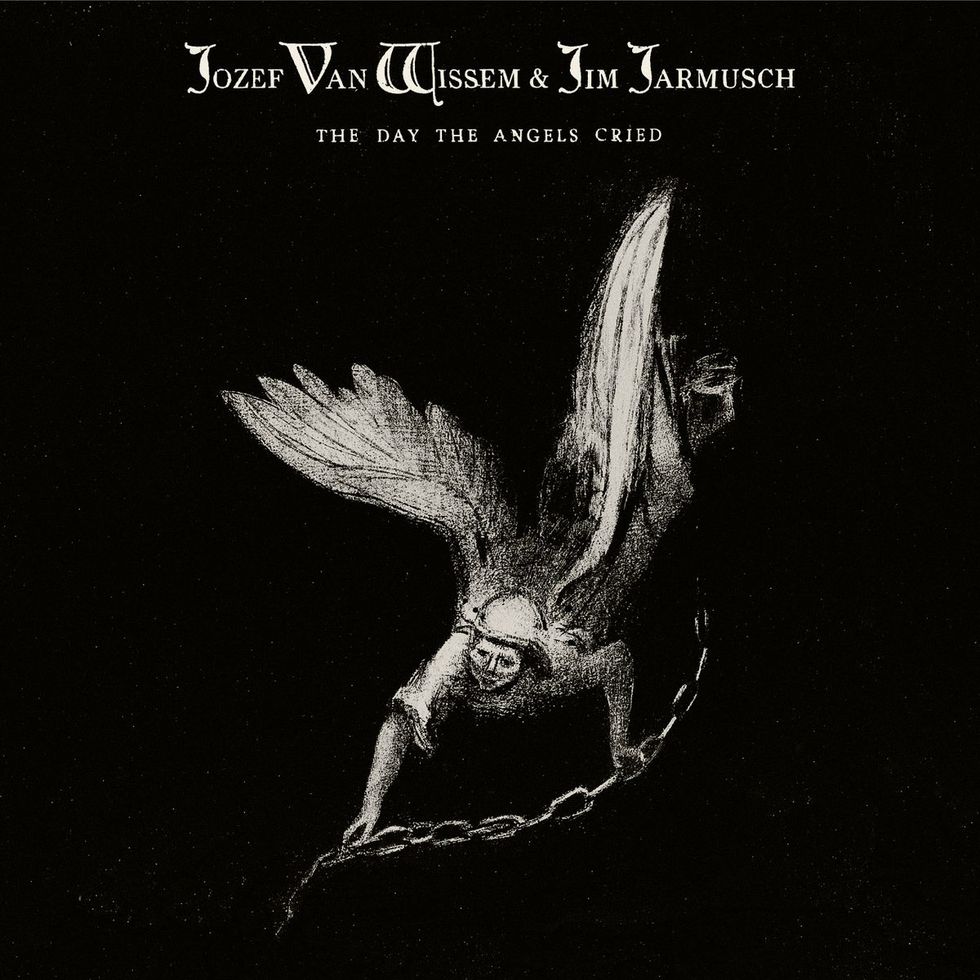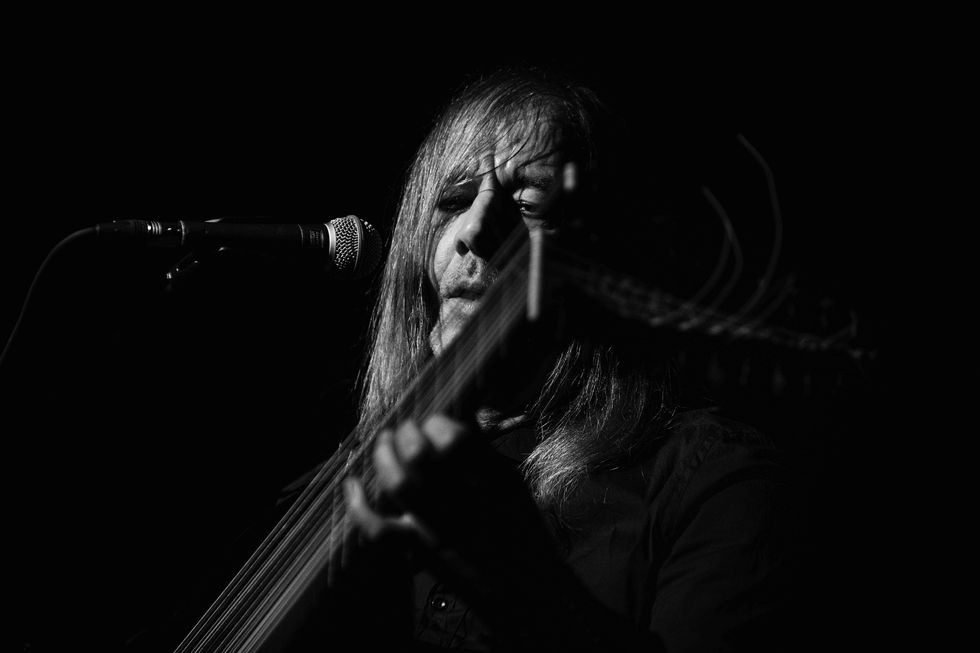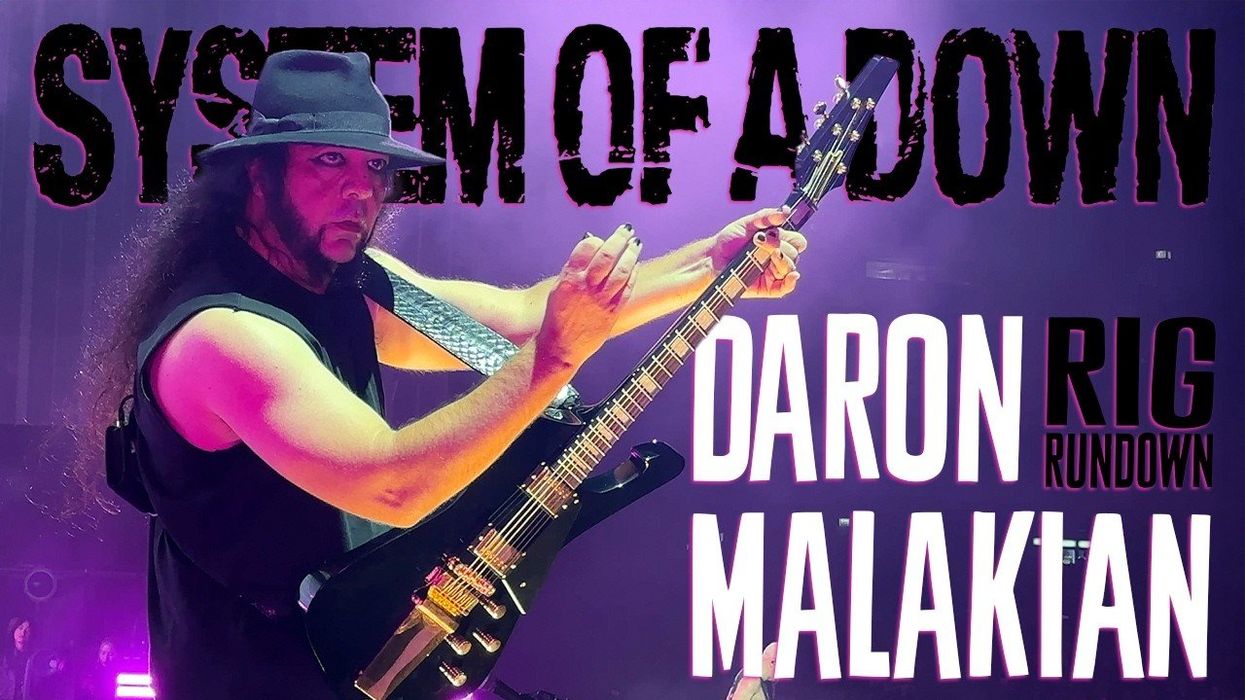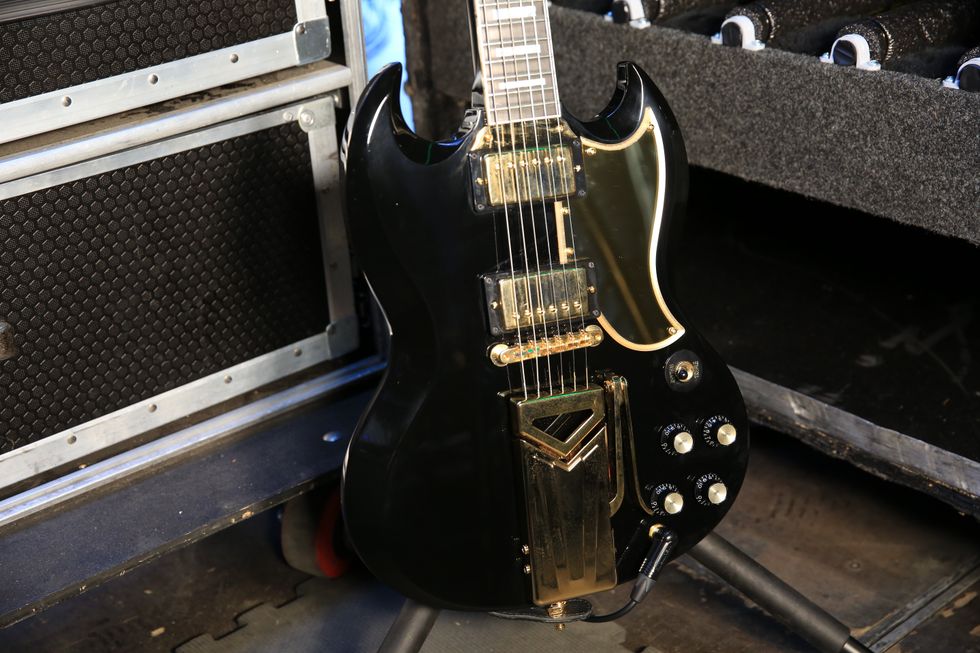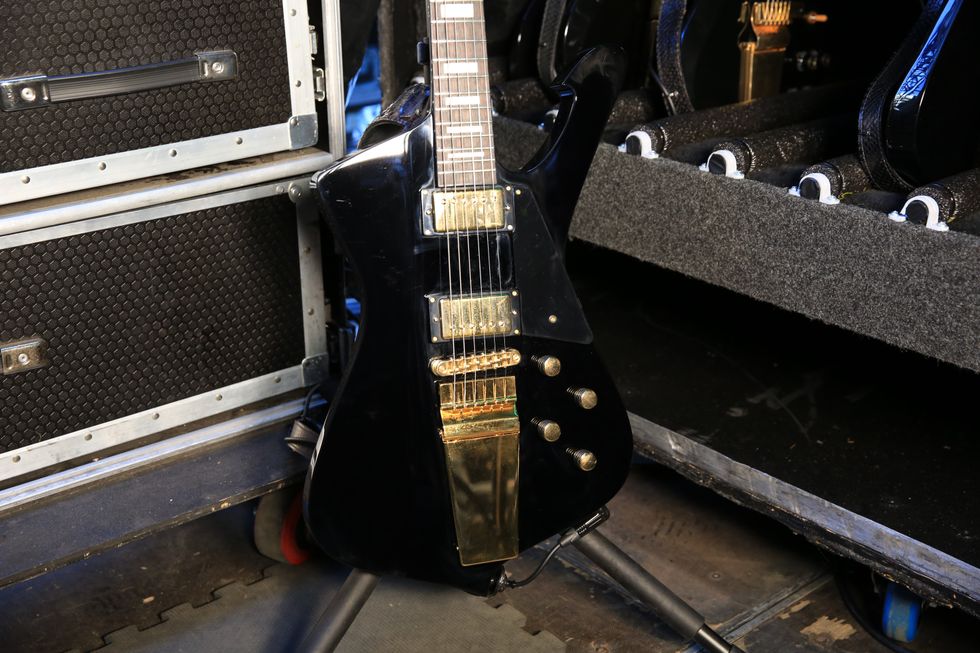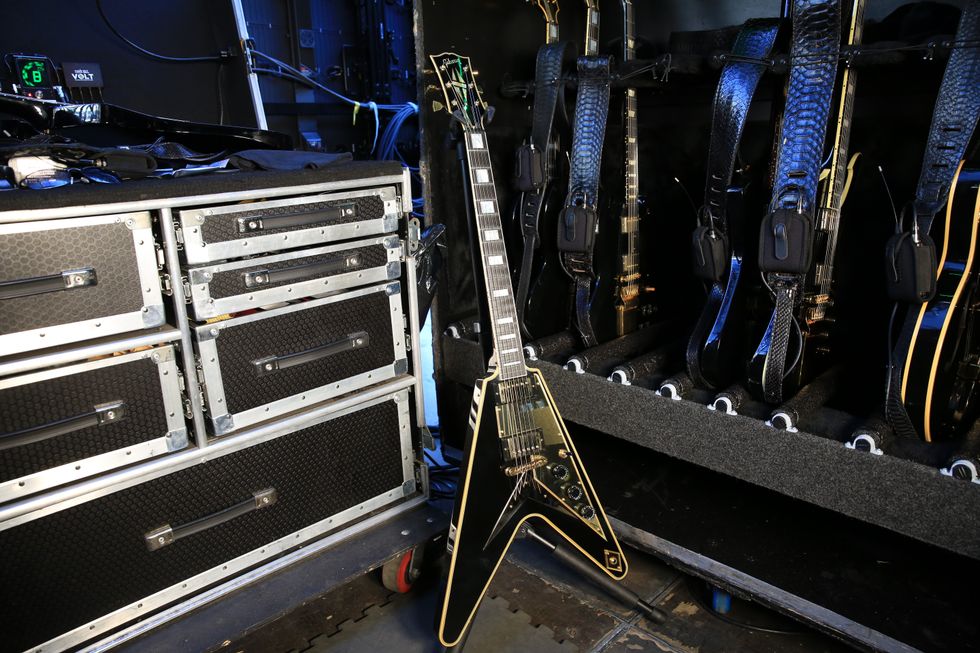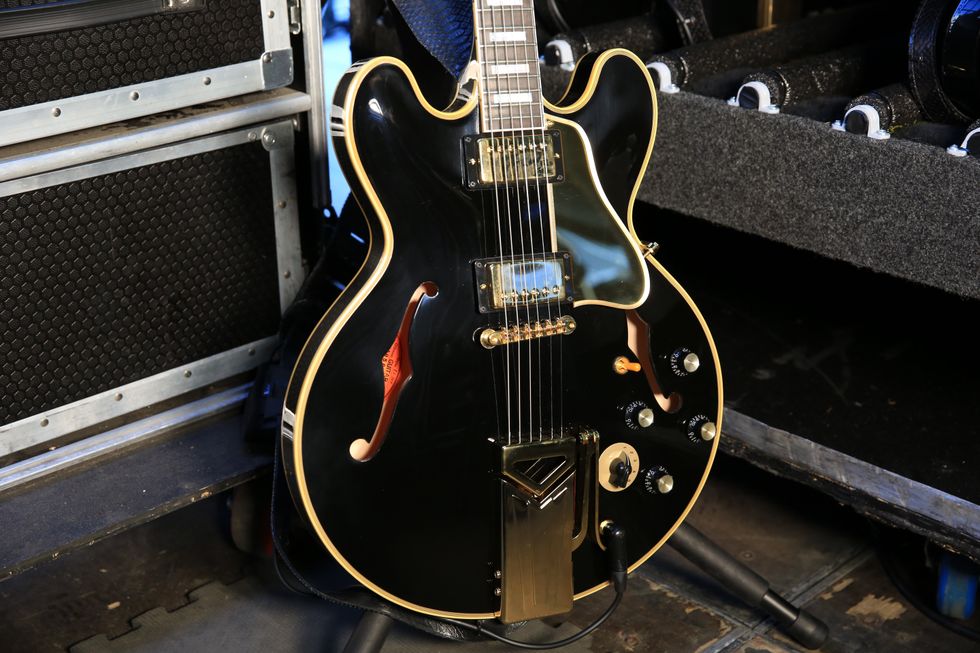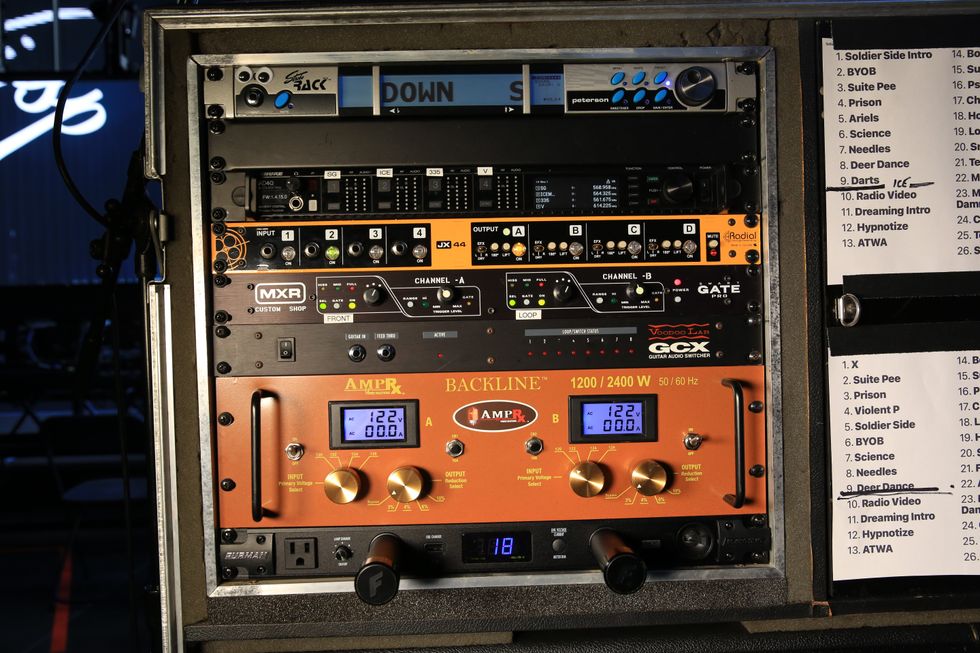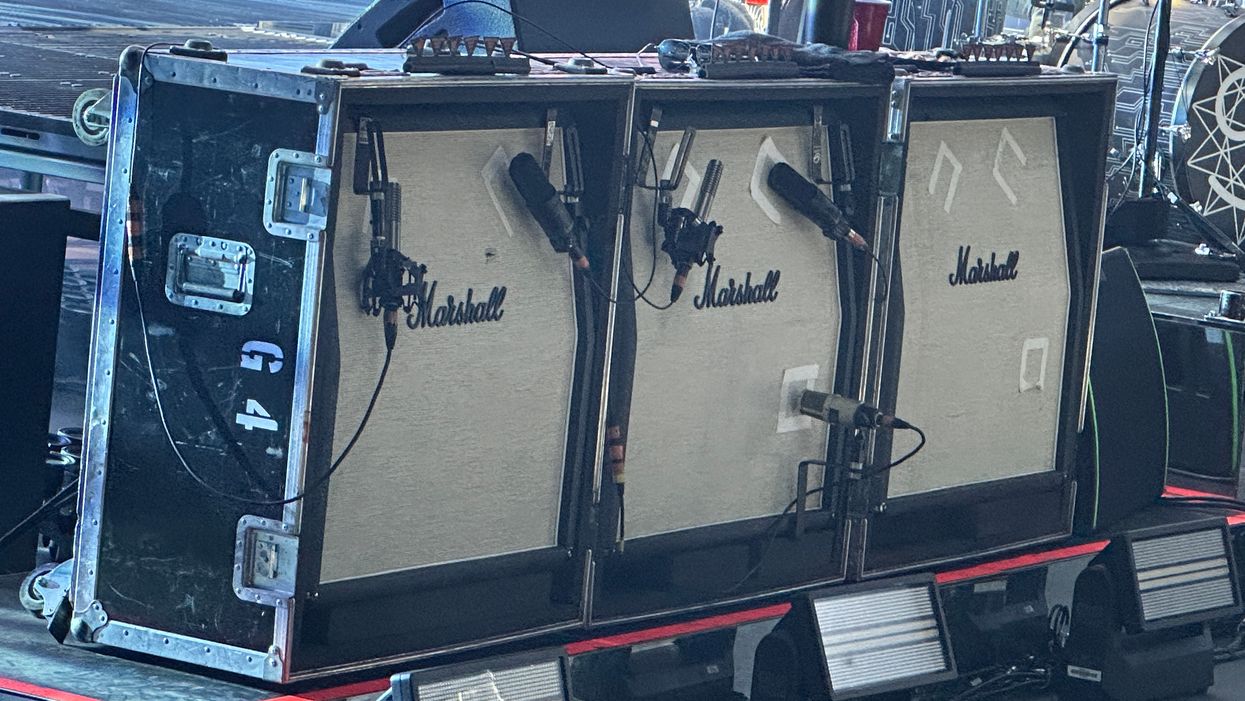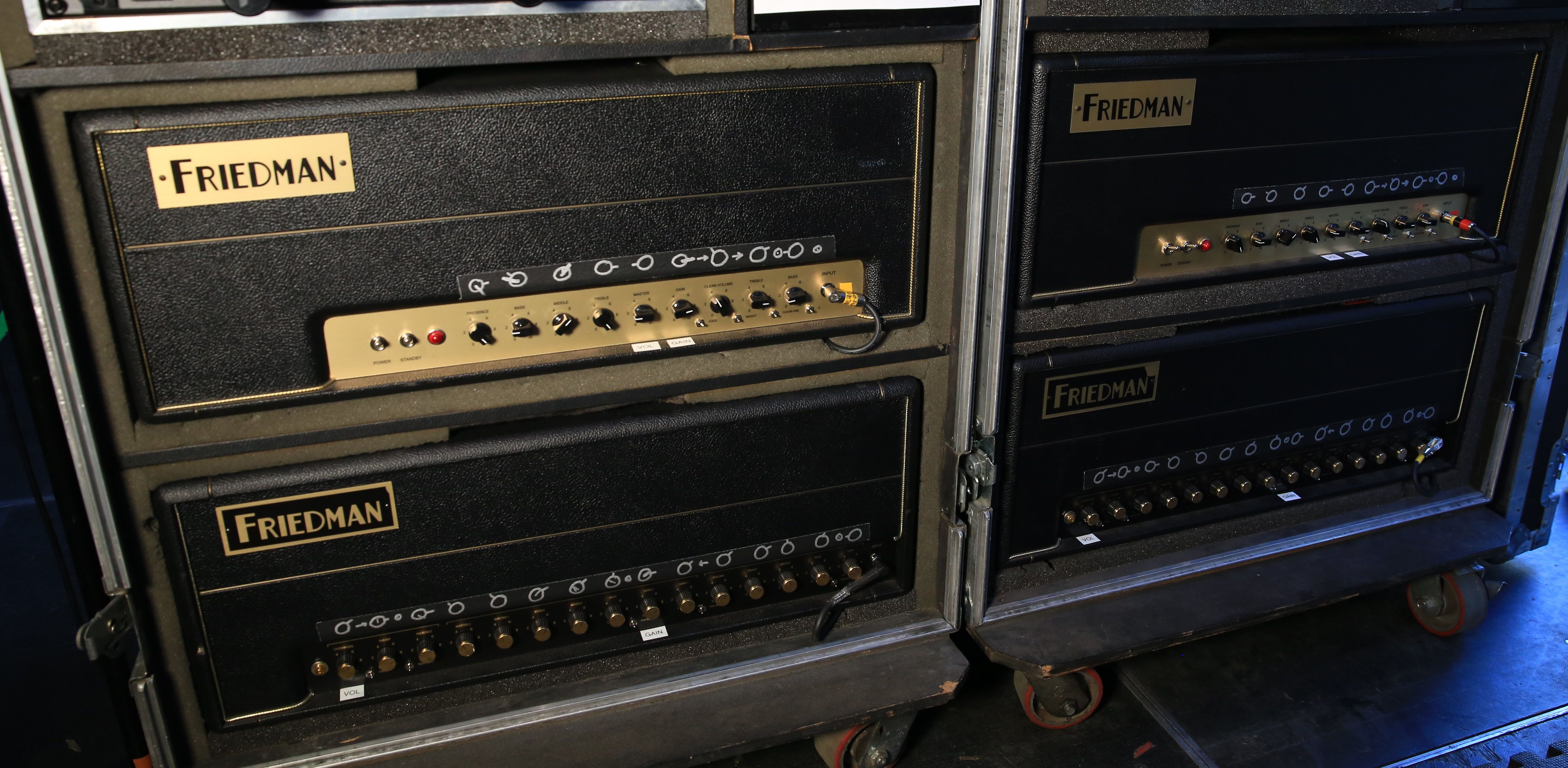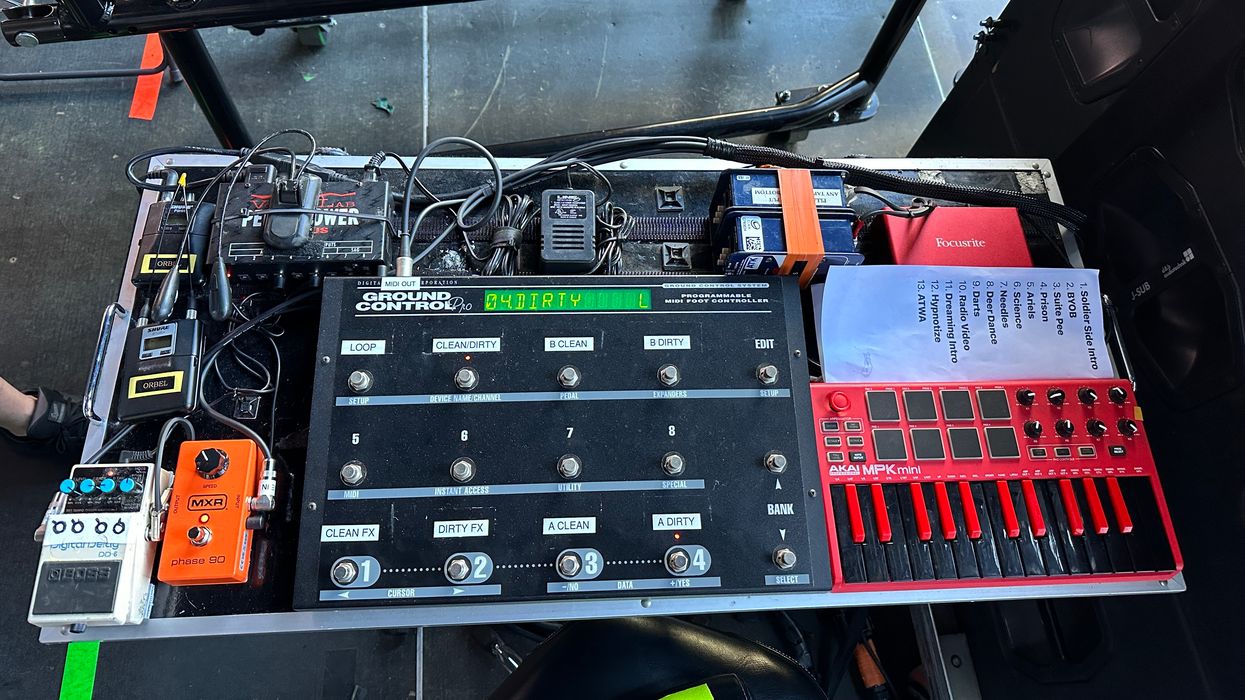Many of us have been transfixed by Jimi Hendrix’s acoustic 12-string performance of “Hear My Train A Comin’,” in the 1973 documentary A Film About Jimi Hendrix. Including Slash. But Slash, being Slash, took it a step further.
Chasing that sound, he purchased a used Fraulini 12-string built along the same lines as the 1960 Zemaitis that appears in Jimi’s hands. Slash says that guitar had some intonation issues, so he commissioned Fraulini luthier Todd Cambio, who specializes in reproductions of historic models, to make him a new one.
“It’s basically a vintage-style baritone acoustic guitar,” Slash explains. “The strings are tuned down to open B or open C, and the tension is there. It’s just amazing sounding—really earthy, soulful, and rich. So, it was just sitting around my house and I hadn’t any designs as to what I was going to use it for.”
Slash feat. Brian Johnson - "Killing Floor" (Official Music Video)
Until he started developing a high-intensity, guest-star-packed blues album, the just-released Orgy of the Damned. Then, it was game on for the 12-string, thanks to a conversation with Iggy Pop, who suggested they team up for a version of Lightnin’ Hopkins’ apocalyptic “Awful Dream.”
“It’s the only song on the album that was brought to me by the singer,” Slash recounts. “There was something about the lyrics that really spoke to Iggy. The original sounds very much like it’s almost an outtake—something they did at the end of a session and just left on tape. When I listened to it, I picked up a guitar to play along—it was tuned in B—and I had that light bulb: ‘Hey, I can use that Fraulini guitar and record the song with that.’ When we recorded it, it was just me and Iggy in the studio. We played through the song twice, and that was it. It’s such a cool track—very spontaneous and natural.”
Slash's Gear
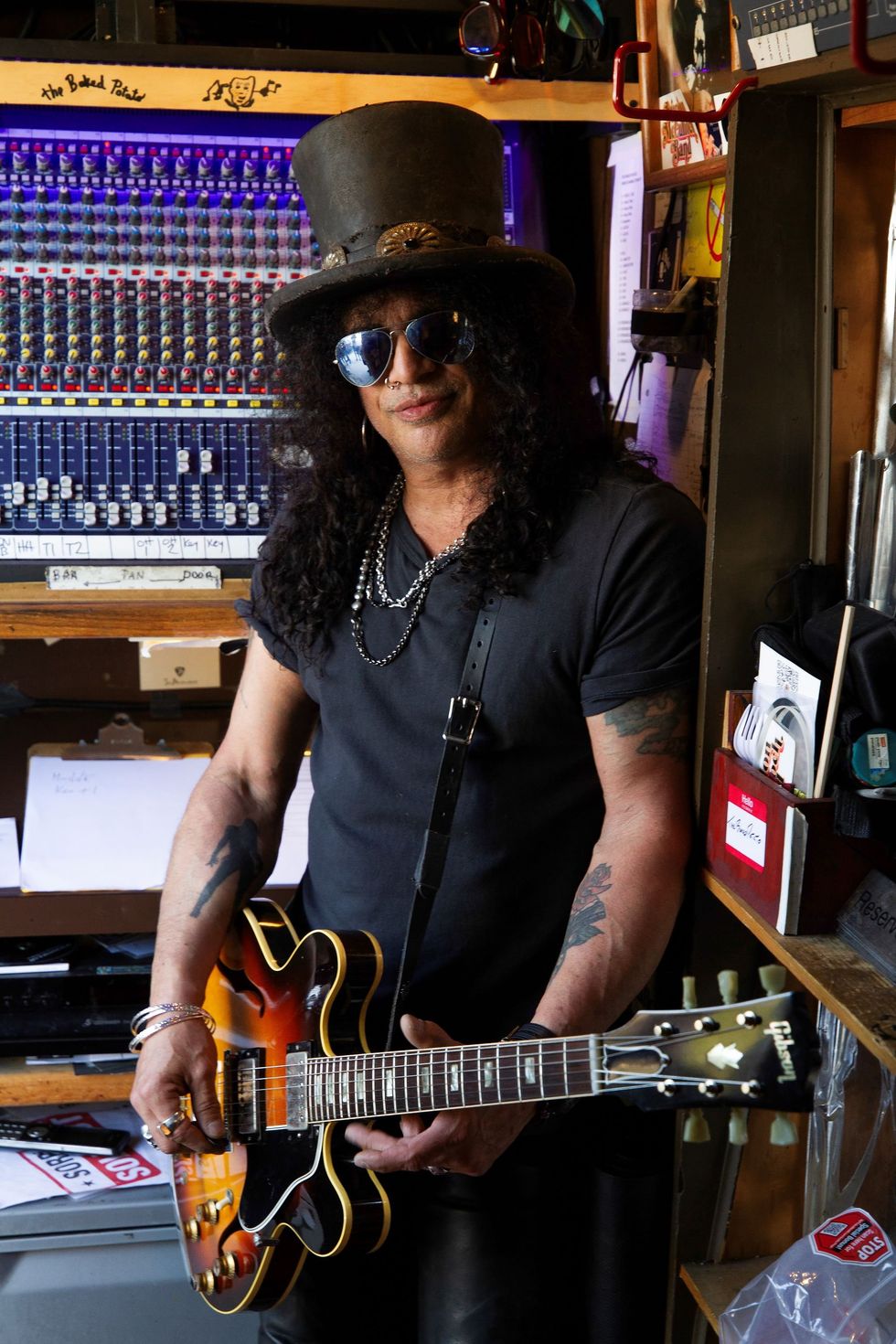
Slash used a Gibson ES-335 for the tunes “Stormy Monday,” “The Pusher,” and “Killing Floor” on Orgy of the Damned, and has a new signature model on the way.
Photo by Gene Kirkland
Guitars
- 1956 Gibson Les Paul goldtop
- 1958 Gibson Les Paul
- 1959 Gibson Les Paul
- Leo Scala-built Gibson Explorer
- Gibson ES-335Gibson J-45
- Custom Fraulini 12-string
- Fender Stratocaster
- Fender Telecaster
Amps
- Magnatone M-80
- Magnatone SL-100
Strings & Picks
- Ernie Ball Signature (.011–.048)
- Dunlop custom 1.14 mm
Slash and Pop, who howls on the song’s outro like a lost, mournful coyote, captured not only Hopkins’ insouciance—a notable part of his musical character—but underscored every bit of the lyric’s fatalist chiaroscuro, which includes references to the atom bomb, an ominous talking bird, and, ultimately, death. Orgy of the Damned, indeed.
But for an album with that title, its dozen tracks plucked from the classic blues and R&B canon are a hell of a lot of fun. Slash and his compatriots—who also include Chris Stapleton, Billy Gibbons, Paul Rodgers, Gary Clark Jr., Brian Johnson, Tash Neal, Steven Tyler, Beth Hart, and Demi Lovato (who kicks out the jams on “Papa Was a Rolling Stone”)—rock the juke joint down. There’s some typecasting. Johnson sings Howlin’ Wolf’s “Killing Floor,” and Gibbons’ wails and grinds through Muddy Waters’ “Hoochie Coochie Man” like he was born to the song, which he was. And while Clark and Slash take the on-ramp that Cream built to Robert Johnson’s “Crossroads Blues,” their solos veer to a different route than Clapton’s, and there’s a slow breakdown that adds a more sonically doleful turn before their engines rev again.
One of the album’s great pleasures is hearing Slash put his own incendiary stamp on these chestnuts, rather than mimicking the solos from the original records, as so many musicians who play classic blues covers do. Sure, the signposts for each song are in place, but they’re departure points, not boundary markers. If anything defines this album’s character, it’s the upbeat energy and sheer glee of making music that ripples through every track. And Slash’s solos are vibrant and filled with grittier turns on the kind of bends and slides that would make Howlin’ Wolf’s venerated guitarist Hubert Sumlin beam.
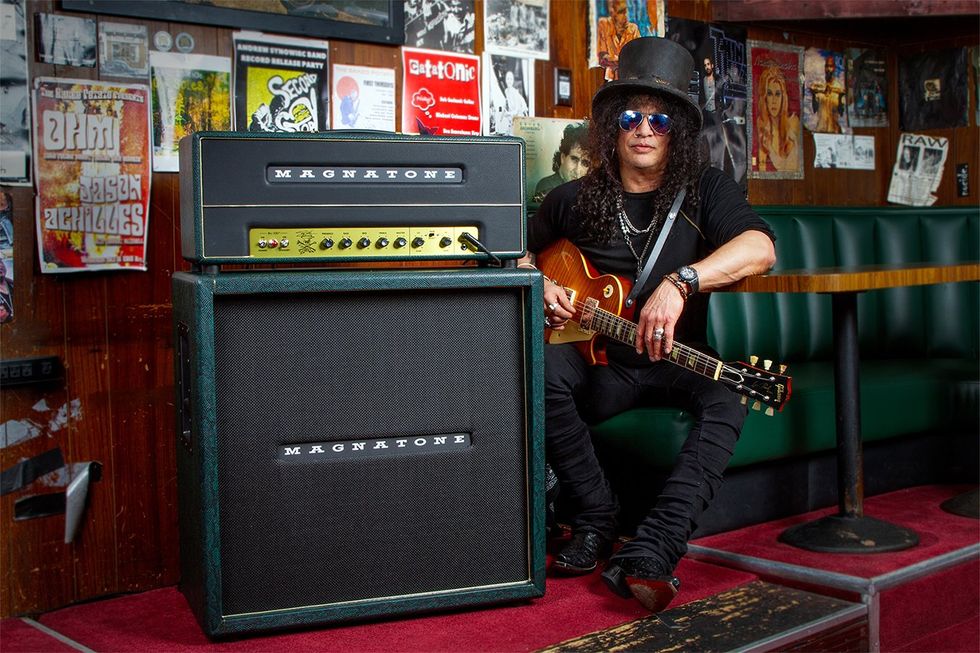
Slash and one of his new signature Magnatone heads, the SL-100, a single-channel 100-watt amp with four 12AX7s, four EL34s, and a buffered effects loop—inspired by the company’s vintage-plus sounding Super Fifty-Nine M-80.
Slash picks up the acoustic again for the intro to Orgy of the Damned’s take on Peter Green’s Fleetwood Mac psych-blues “Oh Well,” sung by Chris Stapleton. But this time it’s not the 12-string. Gibson’s Slash Collection of guitars also includes his J-45 Standard, which you’ve seen him play in acoustic sets by Guns N’ Roses and with his band the Conspirators, with Myles Kennedy. (For those who can't drop 3,500 smackers, there’s also an Epiphone version.) But mostly, the album’s guitars are full-tilt electric. In addition to ’58 and ’59 Les Pauls, and an Explorer made by Gibson master artisan Leo Scala that Slash played on Albert King’s “Born Under a Bad Sign,” he used a fat-toned ES-335 on “Stormy Monday,” “The Pusher,” and “Killing Floor,” and his new signature edition of that model is due about now. Slash also deployed a Strat and a Tele, so there’s a cavalcade of 6-strings. And his favored amps these days are feisty Magnatones—a departure from his longtime fascination with Marshall JCM800s and Silver Jubilees. After falling for the modern Magnatone company’s blend of old-school tone and contemporary performance, he used the brand’s M-80s for Guns N’ Roses’ 2023 tour as well as Orgy of the Damned, and now has a signature version, the SL-100, an EL84-driven beast with two gain modes and no shortage of cleans, grind, and headroom.
“The tour is a fundraiser geared towards equity and bringing people together, driven by the idea of treating everybody like they’re your friend instead of your enemy.”
As a companion to the album, Slash, whose fondness for boa constrictors, anacondas, and pythons is well known, has launched the summer S.E.R.P.E.N.T. Festival tour. That’s an acronym for Solidarity, Engagement, Restore, Peace, Equity N’ Tolerance. It features Slash and the core band from Orgy of the Damned—singer/guitarist Tash Neal, bassist Johnny Griparic, drummer Michael Jerome, and keyboardist Teddy Andreadis—and different guest openers at various venues. That cast includes the Warren Haynes Band, Keb’ Mo’, Christone “Kingfish” Ingram, Robert Randolph, Larkin Poe, Eric Gales, ZZ Ward, Samantha Fish, and Jackie Venson. And it’s fair to say, in the spirit of blues, that jamming will occur.
“The tour is a fundraiser geared towards equity and bringing people together,” Slash explains, “driven by the idea of treating everybody like they’re your friend instead of your enemy. A lot of that is going on right now, and I’m expecting to have this really great communal vibe.” A portion of ticket sales goes to the Equal Justice Initiative, Know Your Rights Camp, the Greenlining Institute, and the War Child charities—all organizations the Cat in the Top Hat routinely supports.
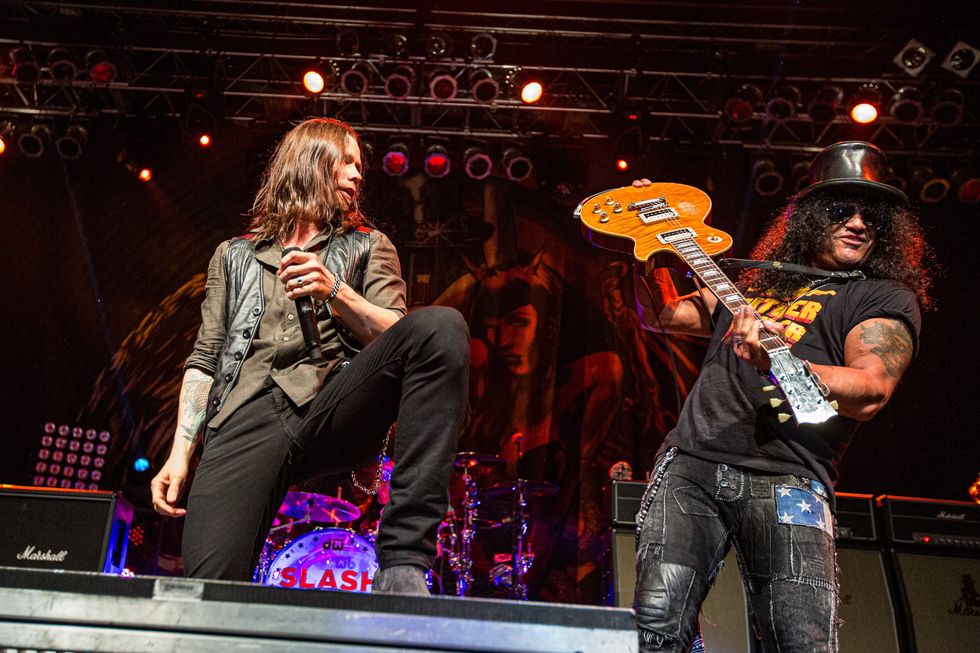
With Myles Kennedy, Slash rides the feedback train. A ’58 and a ’59 Les Paul were part of the chemistry for his new album of reinterpreted blues classics.
Photo by Tim Bugbee/Tinnitus Photography
Aptly enough, blues has always been an especially communal music. And Slash’s initial exposure was familial. He was born in 1965 in England, where he lived until 1970, and his father and uncles filled his ears with the sound of British rock: the Yardbirds, the Who, the Stones, and others. “When I moved to the States, my whole musical experience broadened,” he says. Reggae, folk, and R&B became part of his diet, and then his grandmother turned him on to blues in its un-redefined form.
“B.B. King was the blues artist that really stuck with me, and I think that has a lot to do with his phrasing. He had a very melodic, memorable style.”
“B.B. King was the blues artist that really stuck with me, and I think that has a lot to do with his phrasing. He had a very melodic, memorable style,” Slash recalls. “Fast forward to when I started playing guitar, and as a kid guitar player at the time, you had the Stones and Derek and the Dominos and Cream for models, and then there was Jimi Hendrix, Zeppelin, and Johnny Winter. Being influenced by those guys took me back to that B.B. King record my grandmother first played for me. It was a big full-circle blues discovery that I had. And so, the blues has always been an important element in my playing.
“I didn’t know it, technically, at the time, but one of the things I picked up on about Jimmy Page, hearing the first two Zeppelin albums, is how much he’s got a B.B. King feel when he plays slow blues. There’s a texture to B.B.’s playing that I understood even before I dreamt of picking up a guitar. I have a huge passion for the feel of blues and the guitar playing and the singing and the stories. It all really means a lot to me.”
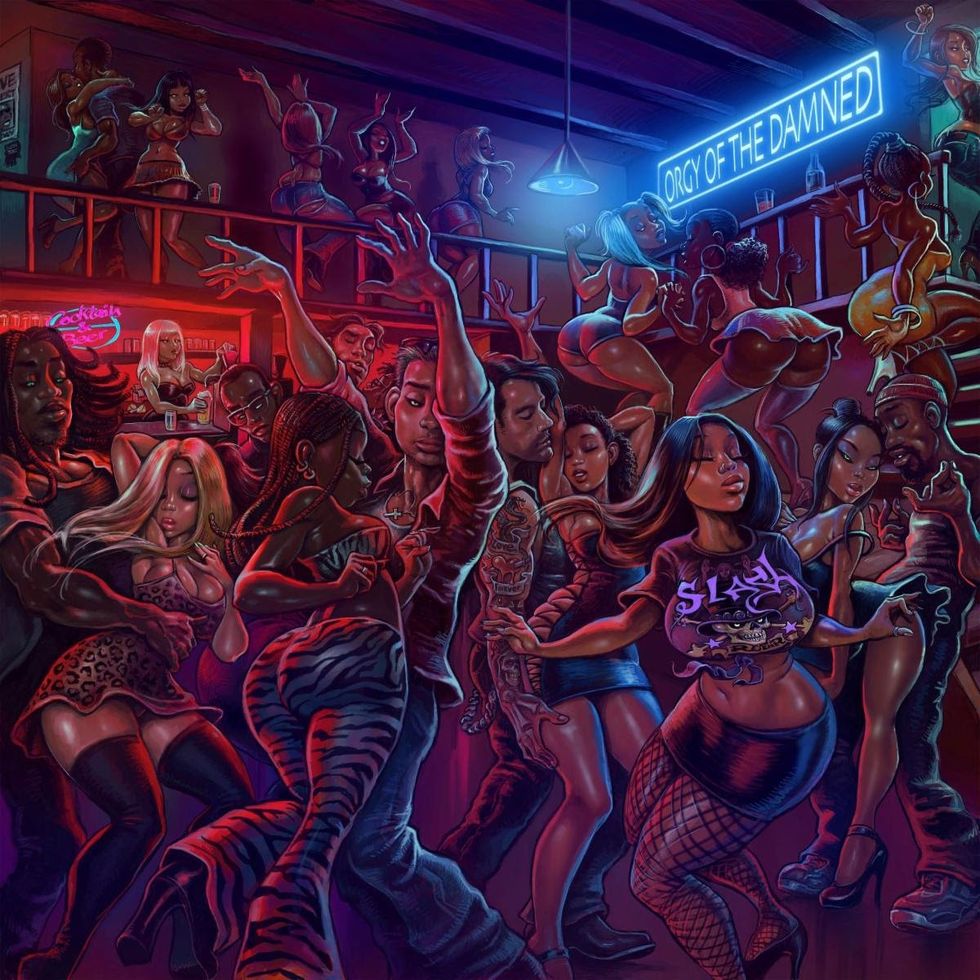
Slash recorded his new album at six different studios, but its core tracks went down at East West and his own Snakepit studios in Los Angeles.
While it’s been obvious since the early days of GNR that he’s a blues-informed player, “It’s a great outlet to be able to play with musicians who are really steeped in the genre,” Slash observes. He’s referring to his Orgy of the Damned playmates Griparic and Andreadis, with whom he formed the blues tribute band Slash’s Blues Ball in the mid ’90s—a busman’s holiday compared to his high-profile non-GNR projects over the years: Slash’s Snakepit, Velvet Revolver, and, currently, Slash featuring Myles Kennedy and the Conspirators. “But for this album, I didn’t feel like I deserved to jump on the blues bandwagon with all the other artists who are totally committed to the music. I wasn’t feeling like I was trying to keep up with the Joneses in the blues world or trying to impress anybody. Because it’s just fun for me, there is a certain energy to it. I was calling in friends to sing and play, and to just enjoy ourselves.
“I’ve been wanting to do some sort of a blues record for a long time,” he continues. “Knowing my way around the blues means I’m able to be in any city and go sit in with any blues band in some bar and kick back and play covers of whatever songs that band is doing. That’s always been a great outlet for me as a player.”
Many of the tunes on Orgy of the Damned came from an old Slash’s Blues Ball set list, or were favorites—like “Born Under a Bad Sign”—Slash has been itching to cut for decades. That explains the songs, but Slash’s guitar tones—portly, burnished, growling, full of just the right amount of low-mid punch, and guided by the hands of a master—are partly the result of his ear’s latest passion. And a gift from the Rev. BFG.

Slash sends a note to the rafters on one of his beloved Gibson Les Pauls.
Photo by Annie Atlasman
“I went through my amplifier trial-and-error period a long, long time ago, and I stuck with Marshalls,” he relates. “But at some point a few years ago, Billy Gibbons gave me this Magnatone amp. It was a combo, and I was like, ‘cool, yeah, thanks.’ I put it with a bunch of other stuff and never checked it out.” When it was time to consider tracking Orgy of the Damned, “I knew I didn’t have to bring a stack of Marshalls.” So, he visited his collection of vintage Fenders and Voxes, and a 50-watt Marshall with a half-stack. And then he came across the mothballed Magnatone.
“I decided to swap out my Marshalls for Magnatone heads and 2x12 half-stacks for Guns N’ Roses, and then with the Conspirators.”
“Sonically, it was just there. I used that amp for a whole rehearsal and then the first song we cut, ‘Key to the Highway.’ It sounded fucking great!” He ended up using the Magnatone M-80, a 45-watt 1x12 combo with four 12AX7s and two EL34s, for the entire album. “Then I decided to swap out my Marshalls for Magnatone heads and 2x12 half-stacks for Guns N’ Roses, and then with the Conspirators.” It wasn’t long before he was in Magnatone’s St. Louis shop, working on the 100-watt head that now bears his signature and will accompany him as he rides the S.E.R.P.E.N.T.
“Playing this music makes me feel very grounded and connected,” he observes. “Emotionally, it really helps me to sing. There’s a lot more improvisation, so I’m not tethered, and this will be uncharted waters for me—to be able to go onstage and do an entire show of whatever it is that we want to play. Blues is the best for improvisation. You can really express yourself emotionally. Jazz doesn’t speak to me so much, and I don’t play it because I don’t have anything to say in jazz. But in blues … I feel like I can really express myself down to the last letter.”
YouTube It
Playing through his now-favored Magnatone amps, Slash, with Guns N’ Roses last year, essays the song that built his reputation as a guitar hero, “Sweet Child O’ Mine.”


